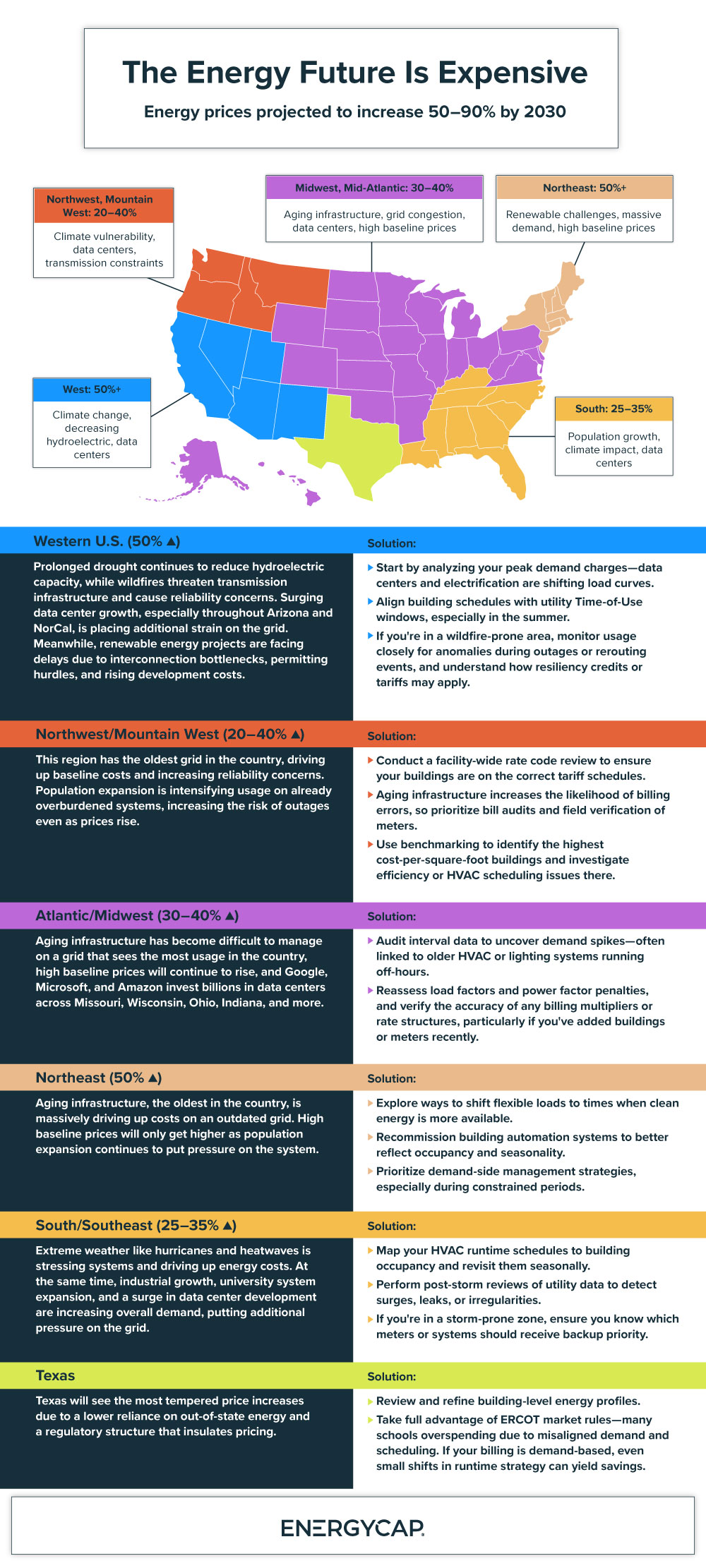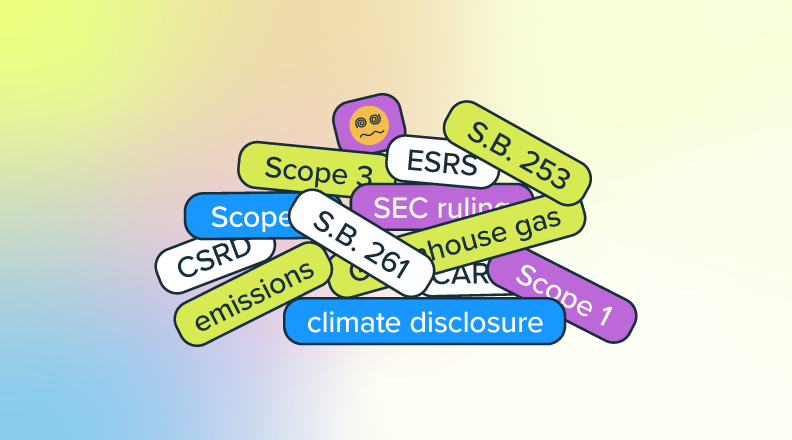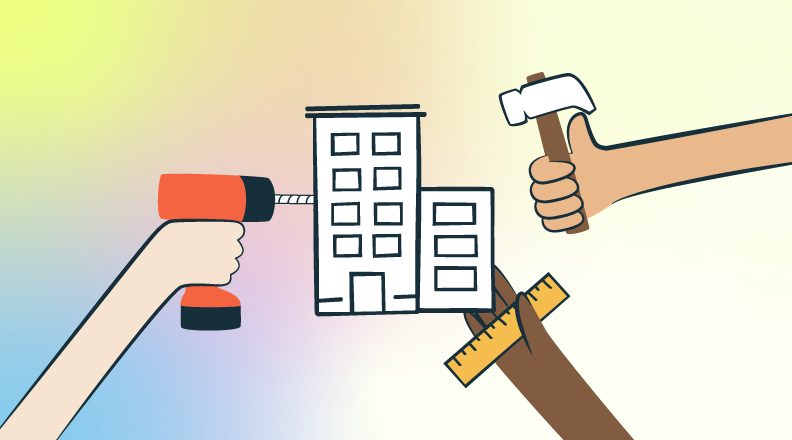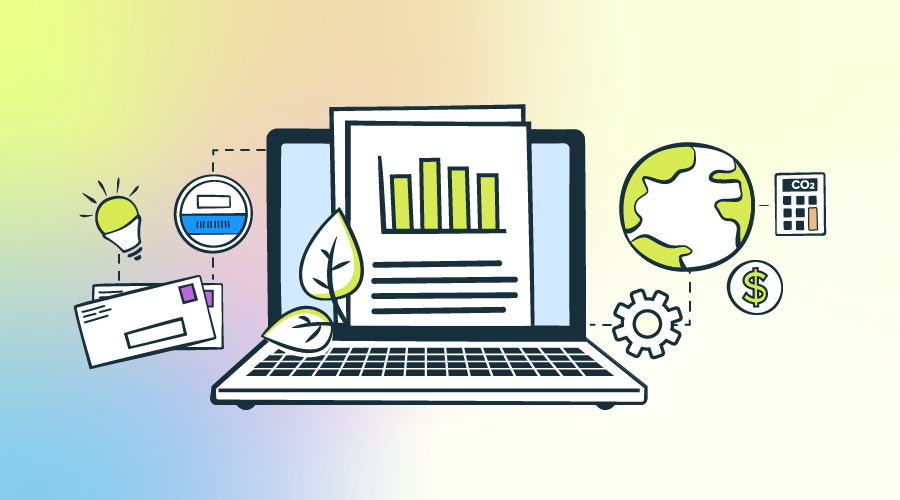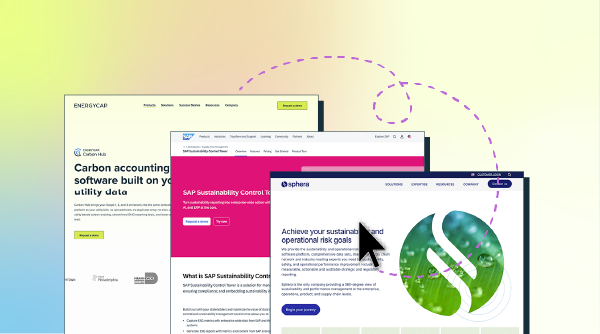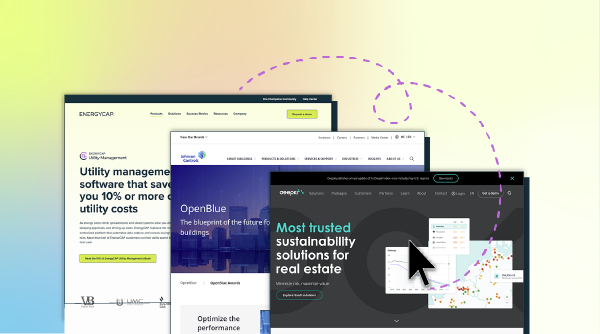Across the U.S., energy costs are climbing, and higher education institutions are being hit especially hard. At the same time, falling enrollment rates, costly infrastructure, and pressures to electrify mean university budgets are tighter than ever. The graphic below outlines key regional energy price projections through 2030.
We know how important it is for energy management teams in higher ed to quantify their results, prove their success, and justify ongoing investment. Below, we break down what’s happening in each region and offer practical recommendations for how colleges and universities can identify savings opportunities and increase resilience.
Western U.S. Challenge
Prolonged drought continues to reduce hydroelectric capacity, while wildfires threaten transmission infrastructure and cause reliability concerns. Surging data center growth, especially throughout Arizona and NorCal, is placing additional strain on the grid. Meanwhile, renewable energy projects are facing delays due to interconnection bottlenecks, permitting hurdles, and rising development costs.
Recommendations: Start by analyzing your electrical load profiles—data centers and electrification are likely going to drive new and potentially different rate tariffs. Verify you’re on the best schedule. Investigate loading shifting strategies to take advantage of Time-of-Use rates especially in the summer. If you’re in a wildfire-prone area, outages will become more common. Invest in resiliency (battery storage) solutions that can also be used to shave peak demand.
Northeast Challenge
This region has the oldest grid in the country, driving up baseline costs and increasing reliability concerns. Population expansion is intensifying usage on already overburdened systems, increasing the risk of outages even as prices rise.
Recommendations: Conduct a facility-wide rate code review to ensure your buildings are on the correct tariff schedules. Old manually read meters and aging infrastructure increase the likelihood of billing errors, so prioritize bill audits and field verification of meters. Use benchmarking to identify the highest cost-per-square-foot buildings and complete energy efficiency project ROI analyses. Usually outdated lighting and old HVAC systems can be replaced with relatively quick paybacks. Don’t wait–these systems cost you more than you realize.
South/Southeast Challenge
Extreme weather like hurricanes and heatwaves is stressing systems and driving up energy costs. At the same time, industrial growth, university system expansion, and a surge in data center development are increasing overall demand, putting additional pressure on the grid.
Recommendations: Align your HVAC runtime schedules to building occupancy and revisit them seasonally. Perform post-storm reviews of utility data to detect surges, leaks, or irregularities. If you’re in a storm-prone zone, ensure you know which meters or systems should receive backup priority.
Pro Tip: If you manage a mix of solar, storage, and PPAs, explore renewable energy management software that can help your team achieve cleaner GL mapping, defensible GHG reporting, and a single source of truth.
Midwest/Atlantic Challenge
Some of the heaviest grid usage in the country happens here, driven by large campuses, dense metros, and growing data center demand. Aging infrastructure and high baseline energy prices are compounding the strain, making it harder for institutions to manage cost and reliability.
Recommendations: Audit interval data to uncover demand spikes, which are often linked Building Automation System (BAS) sensor calibration issues or failures. Complete a load factor analysis to find savings opportunities and look for power factor penalties that may be showing up on your bill. Field verify the accuracy of any meter multipliers and confirm they match your bill, particularly if you’ve added buildings or meters recently.
Northwest/Mountain West Challenge
Transmission bottlenecks are slowing the integration of new renewable projects, limiting the region’s ability to scale clean energy reliably. At the same time, rapid tech-sector growth (especially in cities like Denver, Boise, and Salt Lake City) is reshaping demand patterns and driving up overall load.
Recommendations: Explore ways to shift flexible loads to times when cheaper energy is more available. Seasonally adjust building automation systems to better reflect occupancy patterns and weather severity. Prioritize demand-side management strategies by working collaboratively with internal teams to ensure business operations function optimally while simultaneously reducing loads.
Texas Challenge
Prices may be more stable, but demand growth, extreme heat, and decentralization still bring complexity.
Recommendations: Review and refine building-level energy profiles. Take full advantage of ERCOT market rules—many schools are overspending due to misaligned demand and scheduling. If your billing is demand-based, even small shifts in runtime strategy can yield meaningful savings.
Natural Gas Nationwide Challenge
The cost of natural gas is expected to rise 24% in 2025, with potential increases of up to 90% by 2030.
Recommendations: Inventory gas-consuming systems by building. Consider slightly lowering heating set points in buildings that use most of their gas for heating purposes. More importantly, if the building is able to recover, use an aggressive set back temperature during unoccupied time. Buildings with the capabilities should take advantage of hot water reset schedules on their boiler systems. Make sure boilers have annual inspections to ensure safety and optimize efficiency.
What if, instead of rising costs, your bills stayed the same—or even went down?
All of these strategies are achievable, but finding the time, knowing which savings opportunities to pursue, and proving the impact of your team is nearly impossible when you’re buried in spreadsheets and siloed systems.
That’s where EnergyCAP comes in. By centralizing your energy and utility data, automating complex processes, and surfacing cost-saving errors and insights, EnergyCAP gives you the clarity, speed, and control to stay ahead of rising costs and demonstrate your impact with confidence. It’s everything you need to manage energy smarter, and our platform is custom built for the job.






